We continue to dedicate this book to all of you active investors who have the sense of purpose and independence of thought to make your own investing decisions, or at least to ask the right questions. You continue to be wise enoughand inquisitive enoughto realize that not all the answers can be found in one place, and smart enough to seek the convenience of a good place to start.
PART I
THE ART AND SCIENCE
OF INVESTING IN STOCKS
By Peter Sander
The Art and Science of Investing in Stocks
We get two major complaints from you about our annual 100 Best Stocks books. (Yes, we do read your reviews.) But isnt it a bit strange to start off a book by discussing reader complaints? Perhaps, but it also helps us make a couple of key points.
The two complaints are:
- The book is outdated. (I wont buy it again as it is not worth it. The data is too far out of date to be helpful.Ronald Kudla, January 2013)
- There arent enough new companies to look at. (While I wasnt expecting a huge overhaul, paying for another book to read about 12 new companies on the list doesnt seem like a bargain at all.D. Ng, November 2011)
As conscientious authors dedicated to serving our reading customersindividual investors and perhaps a few professionals in the communitywe read your reviews daily and strive to take your feedback into account as we put together new editions. Your reviews are concise, thoughtful, and helpful (except perhaps for one that cited data inaccuracy based on the price of Coca-Cola, which apparently unbeknownst to that reader had undergone a two-for-one split between the time we wrote it and the time he read it and researched the stock. Our bad, again, I suppose, for the time lag). We encourage the feedback, so much so that I am offering my personal e-mail address for the first time for those reviews: .
First, about that time lag. Yes, we do the research for our stock list 810 months before the year actually starts (for 2014, during March through May of 2013). We know thats a big lag, especially in todays cyberworld. But as Ill explain in the next section, the book is intended as a place to start your researchnot to finish itand the kinds of companies we choose have legsthat is, theyll be as good a year or two from now as they are today, or we wouldnt choose them. We know youd like more current information, and we encourage you to get it from a multitude of more current sources. We couldnt deliver everything you need even if we could deliver this research the day after we completed it.
Second, about the number of companies replaced. Mr. Ng made his comment in a year where we replaced 12 companies. Last year, we replaced 14 out of the 100. This year, were replacing 8. Why so low? Simply because weve had a great year (more on that in a minute), and we feel that the best horses to get us another win are the same ones were running now. Remember, our adage is, Sell when theres something better to buy. We did a lot of research and didnt come up with much that was better to buy. Importantly, we feel that the stocks weve chosen are not only well positioned to win a stretch drive, but we think they will also do better on a sloppy tracka market downturn or correction. That too is part of the selection criteria for a 100 Best Stock.
Into the Winners CircleAlmost
It was a terrific finish for last years 100 Best Stocks list; in fact, we beat the field handily, finishing ahead of 47 of the 48 Lipper mutual fund benchmarks in our 2013 test period. We got nipped in the stretch by the Lipper Health/Biotech fund benchmark but beat the rest. Upshot: If you had invested with us, you would have done better with us than in all but one fund categoryand that category probably brings more risk than our more diversified list. shows this happy result.

Table 0.1: Performance Compared to Major Benchmarks
100 Best Stocks 2013 compared to Lipper Mutual Fund Index Benchmarks, One-Year Performance, April 1, 2012April 1, 2013

Its (Even More) about the Individual Investor
If you bought this book, youre probably an astute and experienced individual investor who invests in individual stocks in individual companies. Are you alone? Heck no. In fact, more and more investors are putting themselves in the drivers seat. Why? Its simple: Nobody cares about your money more than you do.
The trend towards self-directed investing was highlighted in a recent Wall Street Journal article entitled A New Era for Do-It-Yourself Investing. In the study central to the article, they asked mostly middle-tier investors whether they were relying more or relying less on advisers since the 200809 financial crisis. Some 50 percent of respondents said less; only 21 percent said more. (The rest said no change.) They cited a trend toward investors wanting to be more involved and toward brokerages offering do-it-yourself services with only occasional help from professional advisers when requested.
Does this mean that everyone is picking their own stocks? No, not necessarily, and not entirely. They may still be using any of among the 14,000 mutual funds or 1,500 exchange-traded fund (ETF) products (or hedge funds, if theyre wealthy enough) that do the driving for them.
Whats emerging today is actually a hybrid model. Do most of the decision-making and work yourself, and get an adviser when you need one. Its in that spirit we provide this book.
Every edition of The 100 Best Stocks to Buy is intended as a core tool for the individual investor. Sure, its hardly the only tool available. Todays explosion of Internet-based investing tools has made this book one of hundreds of choices for acquiring investing information. With the speed of cyberspace, our book will hardly be the most current source.
So does the delay built into the publishing cycle make our book a poor information source? Not at all. As we previously said, it works because the companies we choose dont change so much and because they avoid the temptation to manage short-term, quarter-to-quarter performance. We chose these companies because they have sustainable performance, so who cares if the latest details or news releases are included? In 100 Best Stocks to Buy in 2014, as with all of our previous editions, we focus on the storythe story of each companynot just the latest facts and figures.
As such, 100 Best Stocks is intended as a handy guide and core reference for your investing, not as a be-all end-all investing source. Thus, as much as a source of facts and numbers itself, 100 Best Stocks is intended to present the story for each company and to serve as a model for selecting the best companies and stocks to invest in. By narrowing the universe to the best and the brightest companies out there, 100 Best Stocks is designed to serve as a place to start, not finish, your investment analysis.

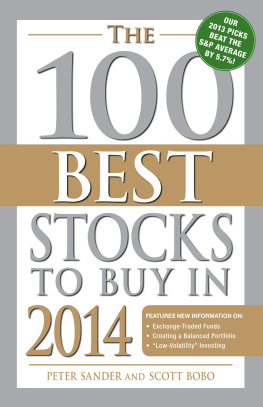




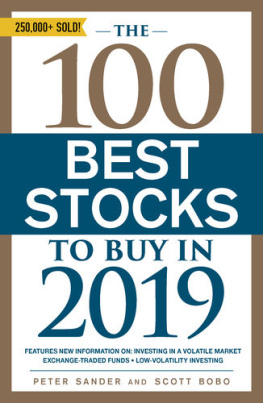
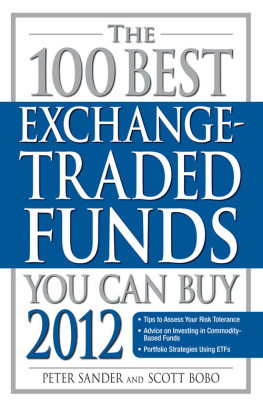

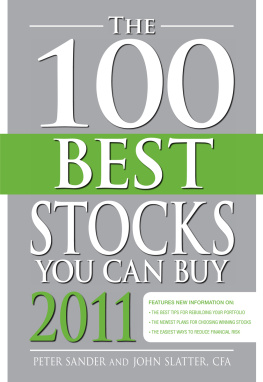
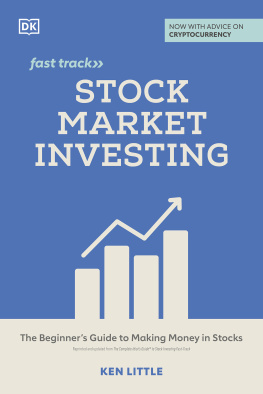

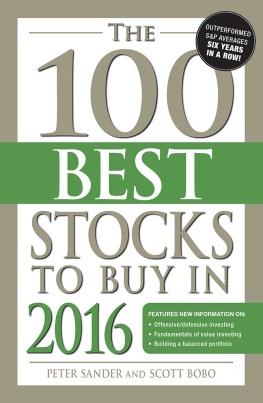
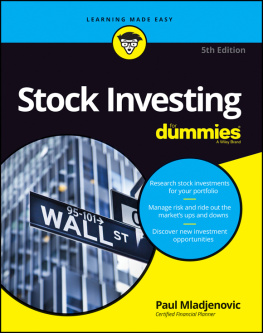
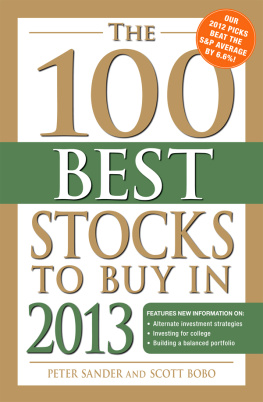
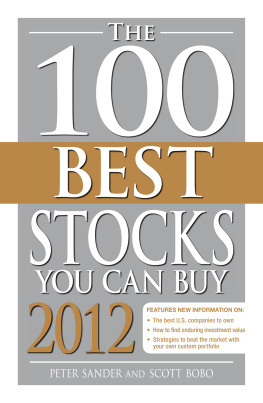


 Table 0.1: Performance Compared to Major Benchmarks
Table 0.1: Performance Compared to Major Benchmarks